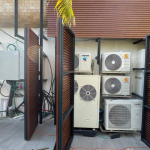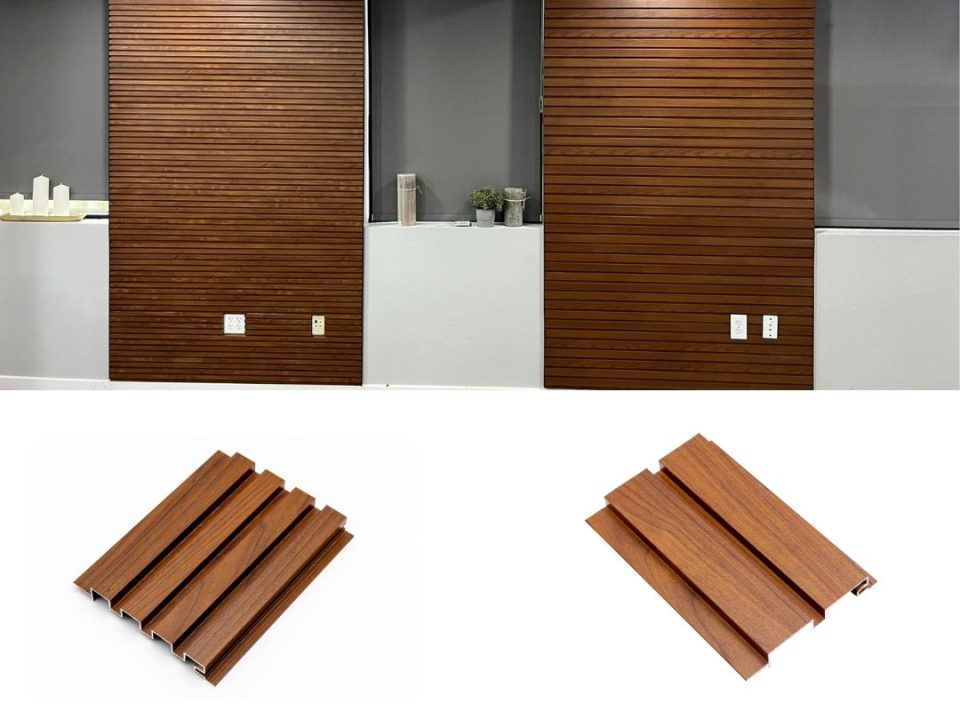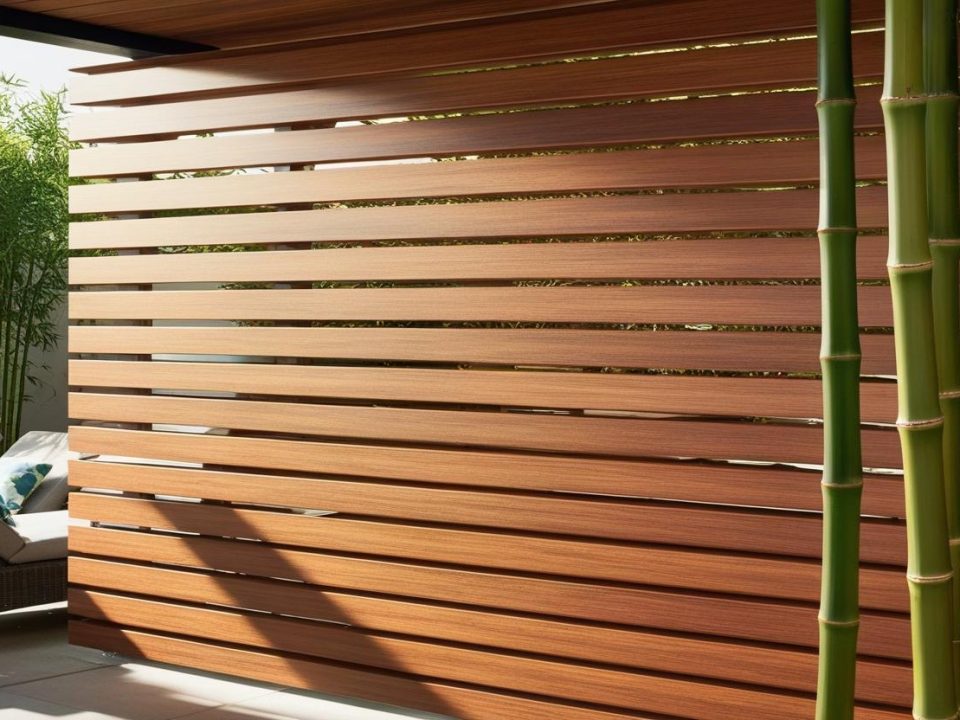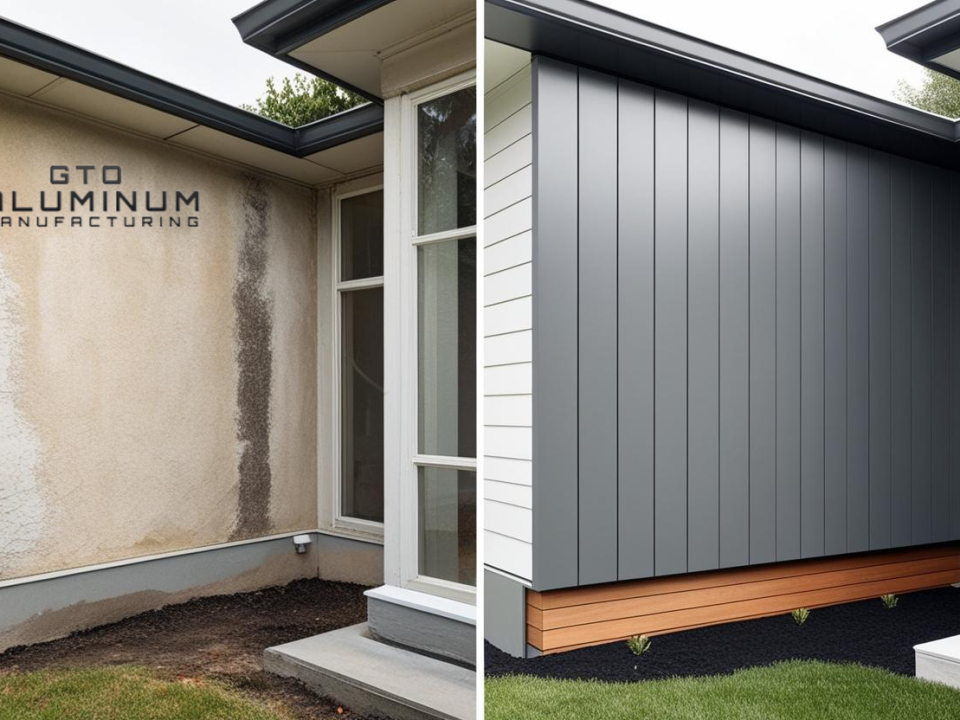
What are the different types of aluminum coating?

Thermal Breaks in Aluminum Cladding: Importance and Benefits

Are you ready to discover how the innovative textures and patterns of aluminum cladding can transform your next architectural project into a masterpiece of design and functionality?
Aluminum cladding stands at the forefront of architectural design, offering a blend of durability, sustainability, and endless aesthetic possibilities.
As we venture into the future, the exploration of textures and patterns in aluminum cladding is pushing the boundaries of architectural expression, marrying form with function in innovative ways.
This post dives into the emerging trends in aluminum cladding textures and patterns, highlighting how these advancements are set to redefine our built environment.
The Evolution of Aluminum Cladding
Aluminum cladding has come a long way from its utilitarian roots, evolving into a favored material for architects and designers worldwide.
Initially celebrated for its lightweight nature and corrosion resistance, the focus has shifted towards its potential for aesthetic versatility.
Modern manufacturing techniques have unlocked new realms of texture and pattern possibilities, enabling designs that were once deemed unattainable.
The future of aluminum cladding is vibrant, with textures and patterns playing a pivotal role in environmental integration and energy efficiency.
As architects seek materials that offer both form and function, aluminum cladding is stepping up to meet these demands with innovative and sustainable solutions.
Nature-Inspired Textures and Patterns
Nature has always been a rich source of inspiration for architectural design.
The latest trends in aluminum cladding include textures that mimic natural elements, such as wood grain, stone, and even water.
These nature-inspired textures offer a way to harmonize buildings with their surroundings, creating facades that blend seamlessly into the landscape or stand out as reflections of the natural world.
The advancement in digital printing and embossing technologies has made it possible to achieve these intricate textures on aluminum, providing a sustainable and durable alternative to natural materials.
This not only reduces the environmental impact but also offers architects the flexibility to incorporate natural aesthetics into their designs without the limitations of weight and availability associated with real wood or stone.
Geometric Patterns: A Symphony of Shape
Geometric patterns are experiencing a renaissance in the world of aluminum cladding.
From simple repetitive shapes to complex tessellations, these patterns offer a dynamic visual appeal that can transform the facade of a building into a captivating work of art.
The interplay of light and shadow across these geometric surfaces adds a living, breathing element to the structure, changing perceptions throughout the day.
Emerging technologies in CNC machining and laser cutting are facilitating the creation of these precise and intricate patterns on a large scale.
Architects and designers are leveraging these capabilities to craft facades that not only serve as protective skins for buildings but also as expressions of identity and innovation.
Textural Contrasts: Blending the Old with the New
One of the most exciting trends in aluminum cladding is the juxtaposition of different textures and patterns within a single facade.
This approach creates a rich tapestry of visual interest, drawing the eye and engaging the viewer.
By combining rough, matte textures with smooth, glossy finishes, or integrating organic patterns with geometric shapes, designers can tell a story through the building’s exterior, reflecting its purpose, history, or the community it serves.
This trend speaks to the growing desire for buildings that reflect complexity and depth, mirroring the multifaceted nature of society.
It challenges the notion of uniformity, celebrating diversity and uniqueness in architectural design.
Reflective and Matte Finishes: Playing with Light
The interplay of light is a fundamental aspect of architectural design, and the latest trends in aluminum cladding are maximizing this element through the use of reflective and matte finishes.
Reflective cladding can bring buildings to life, capturing the changing sky or the lights of the cityscape. In contrast, matte finishes absorb light, offering a subtler, more understated elegance.
These finishes can be applied across different textures and patterns, adding another layer of complexity and interaction with the environment.
The choice between reflective and matte can significantly affect the building’s visual impact and energy performance, making it a critical consideration in sustainable design.
Color Infusions: Beyond the Metallic Spectrum
While aluminum is often associated with its natural metallic sheen, advancements in coating technologies have expanded the color possibilities for aluminum cladding.
Vibrant colors, subtle hues, and even gradients are now possible, providing an additional dimension to textures and patterns.
The application of color can highlight specific features, create illusions of depth, or serve functional purposes, such as wayfinding.
As the range of color treatments continues to grow, so does the potential for aluminum cladding to convey mood, brand identity, and aesthetic harmony.
Sustainability Through Design
Sustainability is no longer an option but a necessity in architectural design, and aluminum cladding is at the heart of this movement.
The incorporation of textures and patterns is not purely aesthetic but can also contribute to a building’s environmental performance.
For instance, certain textures can improve solar reflectance, reducing heat gain and energy consumption.
Moreover, the recyclability of aluminum aligns with the principles of circular design, offering a pathway to more sustainable construction practices.
As architects increasingly focus on green building certifications, the choice of materials becomes strategic, with aluminum cladding offering both aesthetic and environmental benefits.
Innovations in coatings and finishes further enhance the eco-friendly credentials of aluminum cladding, offering solutions that are both durable and low maintenance, reducing the need for replacements and minimizing the environmental footprint over the building’s lifecycle.
Interactive Facades: Engaging with the Environment
The future of aluminum cladding also points towards interactive facades that respond to environmental conditions or user interaction.
This involves integrating smart materials and technologies that allow the cladding to change its appearance based on external stimuli, such as temperature, sunlight, or even the presence of people.
Such dynamic textures and patterns not only elevate the aesthetic appeal of buildings but also contribute to their functionality.
For instance, a facade could adapt its reflectivity or color in response to sunlight intensity, contributing to energy efficiency.
This trend underscores the potential of aluminum cladding to not just encase a building but to enable it to interact and adapt to its surroundings in intelligent ways.
The Art of Illusion: Creating Depth and Movement
With the advancement of 3D printing and other fabrication technologies, aluminum cladding can now achieve effects of depth and movement, creating illusions that challenge perceptions.
Through the strategic use of shadows, gradients, and patterns, facades can appear to move or flow, imbuing static structures with a sense of life and dynamism.
This exploration of optical illusions in cladding design not only captivates onlookers but also invites them to engage with the architecture on a more profound level.
It’s a testament to how far the capabilities of aluminum cladding have come, offering unparalleled opportunities for creativity and innovation.
The Personalization of Architecture
As customization becomes increasingly important in our daily lives, it’s no surprise that this trend is extending into the realm of architectural design.
Aluminum cladding is at the forefront, offering unparalleled opportunities for personalization through bespoke textures and patterns.
This allows buildings to reflect the unique identity and values of their occupants, whether it’s a corporate headquarters, a cultural institution, or a residential home.
The ability to tailor the exterior of a building in such detail is revolutionizing the relationship between architecture and identity, making each structure a distinct expression of its purpose and place.
Bridging Tradition and Innovation
The exploration of textures and patterns in aluminum cladding also represents a bridge between traditional craftsmanship and contemporary technology.
By combining age-old motifs and designs with modern materials and techniques, architects can create facades that resonate with cultural significance while embracing the benefits of innovation.
This blend of the old and new enriches the architectural landscape, ensuring that buildings honor their heritage while looking firmly toward the future.
It’s a balance that reflects the evolving nature of society and the role of architecture in shaping our environment.
Conclusion
As we stand on the brink of a new era in architectural design, characterized by innovative textures and patterns in aluminum cladding, the role of forward-thinking manufacturers and suppliers has never been more critical.
GTO Aluminum emerges as a pivotal player in this landscape, poised to drive the evolution of aluminum cladding into the future.
With a deep commitment to innovation, sustainability, and customer-centric solutions, GTO Aluminum is not just a supplier but a partner in architectural creativity.
They offer access to the latest technologies in aluminum cladding, from advanced fabrication techniques to cutting-edge finishes and coatings.
This ensures that architects and designers have the tools they need to realize their most ambitious visions.
GTO Aluminum understands that the future of architecture lies in the balance of aesthetics, functionality, and environmental responsibility.
Their range of aluminum cladding options is designed to meet these diverse needs, offering textures and patterns that are not only visually stunning but also contribute to the energy efficiency and sustainability of buildings.




